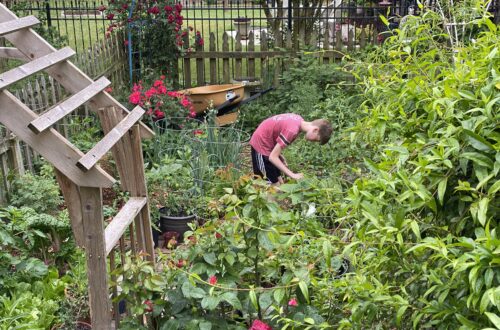What is a "Last Frost Date" and why should you care?
When I started gardening, there was one phrase I starting noticing on every seed packet: last frost date. Another one I heard almost as often was: last killing frost. I wasn’t sure what exactly the difference was and who exactly determined that date. The Farmer’s Almanac defines frost in the following terms.
Light freeze:29°F to 32°F—tender plants killed, with little destructive effect on other vegetation.Moderate freeze:25°F to 28°F—widely destructive effect on most vegetation, with heavy damage to fruit blossoms and tender and semi-hardy plants.Severe freeze:24°F and colder—damage to most plants.
When gardeners use the term “last killing frost”, typically they mean a light freeze. When you first put your young seedlings, they are tender and can easily be harmed by frost. This date doesn’t mean that there won’t be another frost. It just means that 50% of the time, the last one will occur before the date, and the other 50% of the time the last one will occur after. There is usually a two week give or take around this date. In my region, the last frost date is March 31, but the window (90% – 10% probability) is March 15 – April 16. The conventional time to plant here is Good Friday. (Look up your date here.)
However, it doesn’t take a frost or freeze to harm a plant. Some plants may look like they’ve survived a chilly night and dodged the freeze bullet, and you won’t see the effects of the cold temps until later in the season. This happened to me last summer. I put my peppers out right at that last frost date along with the tomatoes. A cold snap came through, so I tented the garden with a tarp. The next morning, some peppers had been smothered by the tarp, but there were some that appeared okay. Guess how many peppers I picked last summer? None. At least none that I ended up eating. The summer before I’d had a bumper crop.
This is why it is important to know soil temperatures and what temperature your plants can tolerate. Peppers like the ground temperature to be above 65F and the night air to not drop below 50F. Your air temps could be high enough, but the soil may not have yet warmed. Here in my region, we don’t reach 65F until May. Tomatoes like the soil to be at or above 60F – again, that’s mid-April in my region or after that last frost four-week window.
So why is it that plants are available when there is still a high risk of frost and the soil is still too cold for the plants to thrive? I have my conspiracy theories, but my guess is that the people demand it. If the people demand it, the retailers will supply it and will be happy to sell them a new plant when the first one gets bitten!
BUT. If you are like me, you started planting your seeds very early and your seedlings are overstaying their welcome and may even be getting leggy from not enough sunlight. You can always consider a cold-frame or hot box (it’s like a mini greenhouse), row covers, plastic mulch and hoop gardens. These will all trap heat in during the day and keep the air and soil warmer at night. If you are going that route, know that there is cost involved and use a thermometer to check and make sure you are getting the soil warm enough. I will keep moving my plants to the deck during the day and inside at night for the next two weeks.




One Comment
Stacey Couch
Great link to the frost date tables! We'll definitely share this post with friends. Thanks for the information